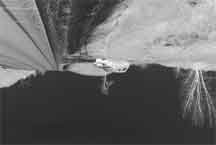Deit39
Member
- Joined
- Nov 4, 2009
- Messages
- 13
- Format
- Medium Format
Hello APUGers..
I am Bob. I graduated college a year ago and have been itching to get back to the darkroom ever since. I don't have a lot of money, live at home with my folks, and although I havew approx 2 years experience in the darkroom, I never mixed my own chemicals!
Lucky for me, my father and grandfather were both avid photo enthusiast and my dad has a whole bunch of old trays, squeegees, an old bogen enlarger (circa 1950s-60s), a double 120 and single 35mm steel developing tanks, grainfocuser, filters and a various assortment of other things.
Also.. to my amazement..I found a Bronica Zenza SLR and a Minolta autocord TLR in the closet. I never knew my dad had these awesome cameras and was a bit annoyed he'd been hiding them from me!! I've been shooting with both cameras for a month or two and have a few rolls waiting to be developed.
Anyways..
I got myself 5 graduated 32oz pitchers, 2 half gallon 'accordion' containers for the developer into, and 2 one gallon brown bottles.
Chemicals I bought:
Kodak pro D-76 powder solution
Sprint Stop
Ilford Rapid Fixer
Photog's Forumulary - Hypo clear agent
Kodak pro Photo-Flo 200
Now I 've never mixed my own chemicals before so I am very nervous about messing it all up.
I know developer is sensitive to oxygen, hence why I got the collapsable 'accordion' bottles to reduce O2 in the bottle.
but I have a bunch of (most likely dumb) questions:
Are any of the chemicals sensitive to light or oxygen while mixing or storing?
How should I mix the developer? the guy at the store told me to slowly add the powder solution little by little.. Does temperture matter when mixing?
I don't have a drying cabinet, when I am done processing, how dangerous is it to just leave them hanging in my basement? (squeegeed or no?)
Uhm. Are there any important tips/advice/info that I should know??
I am sure I have more questions.. but let's just start there!
I am Bob. I graduated college a year ago and have been itching to get back to the darkroom ever since. I don't have a lot of money, live at home with my folks, and although I havew approx 2 years experience in the darkroom, I never mixed my own chemicals!
Lucky for me, my father and grandfather were both avid photo enthusiast and my dad has a whole bunch of old trays, squeegees, an old bogen enlarger (circa 1950s-60s), a double 120 and single 35mm steel developing tanks, grainfocuser, filters and a various assortment of other things.
Also.. to my amazement..I found a Bronica Zenza SLR and a Minolta autocord TLR in the closet. I never knew my dad had these awesome cameras and was a bit annoyed he'd been hiding them from me!! I've been shooting with both cameras for a month or two and have a few rolls waiting to be developed.
Anyways..
I got myself 5 graduated 32oz pitchers, 2 half gallon 'accordion' containers for the developer into, and 2 one gallon brown bottles.
Chemicals I bought:
Kodak pro D-76 powder solution
Sprint Stop
Ilford Rapid Fixer
Photog's Forumulary - Hypo clear agent
Kodak pro Photo-Flo 200
Now I 've never mixed my own chemicals before so I am very nervous about messing it all up.
I know developer is sensitive to oxygen, hence why I got the collapsable 'accordion' bottles to reduce O2 in the bottle.
but I have a bunch of (most likely dumb) questions:
Are any of the chemicals sensitive to light or oxygen while mixing or storing?
How should I mix the developer? the guy at the store told me to slowly add the powder solution little by little.. Does temperture matter when mixing?
I don't have a drying cabinet, when I am done processing, how dangerous is it to just leave them hanging in my basement? (squeegeed or no?)
Uhm. Are there any important tips/advice/info that I should know??
I am sure I have more questions.. but let's just start there!








 . Please correct me if I'm wrong, anyone! As for the photo-flo, I'd go to a drug store and pick up a measured syringe for measuring those really small amounts. They work wonders. Basically all those dilution numbers are for working solutions and should not be mixed up until the day you'll be doing your processing. For the stop bath, it probably has a color indicator, so you can keep your mixed stop solution in a separate container and keep reusing it until it changes color on you.
. Please correct me if I'm wrong, anyone! As for the photo-flo, I'd go to a drug store and pick up a measured syringe for measuring those really small amounts. They work wonders. Basically all those dilution numbers are for working solutions and should not be mixed up until the day you'll be doing your processing. For the stop bath, it probably has a color indicator, so you can keep your mixed stop solution in a separate container and keep reusing it until it changes color on you.





